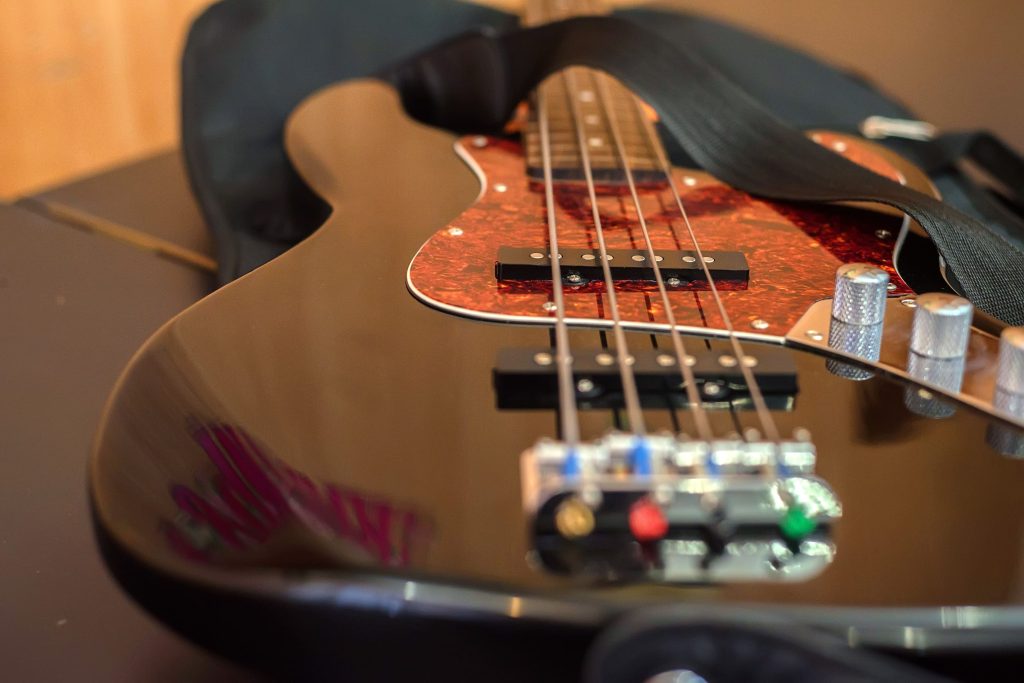String Material: The Impact on Bass Guitar Tone
The Impact of String Material on Bass Guitar Tone
When it comes to shaping your bass guitar’s sound, the material of your strings plays a significant role. From the warmth of pure nickel to the brightness of stainless steel, each string material offers a unique tonal character that can dramatically influence your playing experience. In this article, I’ll walk you through the different types of string materials, their impact on tone, and how to choose the right one for your style.
Introduction to String Material and Tone
The material of your bass strings is more than just a technical detail – it’s a key component in your instrument’s overall sound. Different materials have distinct tonal properties, affecting everything from brightness to sustain. Understanding how these materials influence tone can help you make informed choices that enhance your playing style.
Why String Material Matters
Influence on Tone
The material of your strings has a direct impact on your bass guitar’s tone. For instance, nickel strings tend to produce a warm, mellow sound, while stainless steel strings are known for their bright, cutting tone. The choice of material can make your bass sound smoother or more aggressive, depending on what you’re going for.
Durability and Longevity
Different string materials also have varying levels of durability. Stainless steel strings are known for their longevity and resistance to corrosion, making them a great choice for players who don’t want to change strings frequently. On the other hand, pure nickel strings, while offering a vintage tone, might require more frequent replacement due to their softer nature.
Common Types of Bass Guitar String Materials
Nickel-Plated Steel Strings
Nickel-plated steel strings are a popular choice among bassists due to their balanced tone and feel. They offer a bright sound with a smooth playing surface, combining the best of both worlds – the warmth of nickel and the brightness of steel. These strings are versatile and suitable for a variety of music genres.
Stainless Steel Strings
Stainless steel strings are known for their bright, clear tone and long-lasting durability. They provide a punchy, aggressive sound that cuts through the mix, making them ideal for rock and metal players. Their resistance to corrosion also makes them a favorite for bassists who play in humid environments or have acidic sweat.
Pure Nickel Strings
Pure nickel strings are all about warmth and vintage tone. They produce a mellow, rounded sound that’s perfect for genres like jazz and blues. While they may not be as bright as stainless steel, they offer a smooth feel that many players find comfortable. However, they can wear out faster due to their softer material.
Flatwound vs. Roundwound Strings
Apart from the material, the winding style – flatwound or roundwound – also affects the tone. Flatwound strings, often made with nickel, provide a smooth feel and a deep, thumpy sound, ideal for vintage tones. Roundwound strings, typically made of stainless steel or nickel-plated steel, offer a brighter and more articulate tone, suitable for modern playing styles.
Characteristics of Different String Materials
Tone Profile of Nickel-Plated Steel
Nickel-plated steel strings strike a good balance between warmth and brightness. They have a smooth feel that makes them comfortable to play, and their tone is versatile enough to work well across various genres. These strings are great for bassists who want a balanced sound without sacrificing too much of either brightness or warmth.
Tone Profile of Stainless Steel
Stainless steel strings are bright and articulate, providing a crisp, cutting tone that stands out in any mix. They’re perfect for players who need their bass lines to be heard clearly, such as in rock or metal bands. Additionally, their resistance to wear and tear makes them a durable option for frequent gigging or touring musicians.
Tone Profile of Pure Nickel
Pure nickel strings are known for their soft, vintage tone. They have a mellow sound that’s well-suited for jazz, blues, and classic rock. While they may not have the same brightness as stainless steel or nickel-plated steel strings, their warm, rounded tone is favored by those who appreciate a more traditional sound.
Choosing the Right String Material for Your Style
For Jazz and Blues
If you play jazz or blues, pure nickel or flatwound strings are often the preferred choice. These strings provide a warm, rounded tone that complements the smooth, melodic lines typical of these genres. Their softer feel also makes fingerstyle playing more comfortable, enhancing the overall musical expression.
For Rock and Metal
Rock and metal players often gravitate towards stainless steel strings for their bright, aggressive tone. These strings cut through the mix with a sharp attack and sustain, which is essential for the fast-paced, heavy playing styles found in these genres. The added durability of stainless steel also withstands the rigors of frequent, intense playing.
For Funk and Pop
For funk and pop styles, nickel-plated steel strings are a versatile choice. They offer the perfect balance of brightness and warmth, making them ideal for slapping, popping, and other dynamic techniques. Their balanced tone helps maintain clarity in fast, intricate passages while still delivering enough punch for rhythmic grooves.
How String Material Affects Playability
Feel and Finger Comfort
The feel of the strings under your fingers can vary significantly depending on the material. Stainless steel strings are often described as having a rougher feel, which can provide more grip but also cause finger fatigue. In contrast, pure nickel and nickel-plated steel strings are smoother and easier on the fingers, making them a comfortable choice for longer playing sessions.
Smoothness and Resistance
Flatwound strings, usually made from nickel, are exceptionally smooth, providing little resistance when sliding up and down the fretboard. This makes them ideal for styles that require a lot of slides and smooth transitions. On the other hand, roundwound strings, particularly those made from stainless steel, offer more resistance, which some players prefer for the added control.
String Material and Bass Setup Considerations
Adjusting Your Setup for Different Materials
Different string materials can impact your bass setup. For example, switching from stainless steel to pure nickel strings might require adjustments to your bass’s action and intonation. The tension and flexibility of the strings can vary, so it’s important to make the necessary tweaks to maintain optimal playability and sound.
Impact on Action and Intonation
The material of the strings can also affect the action – the height of the strings above the fretboard – and intonation of your bass guitar. Stainless steel strings, with their higher tension, might need a slightly higher action to prevent fret buzz, while the softer pure nickel strings could allow for a lower action setup. Regular intonation checks are essential when changing string materials to ensure proper tuning across the fretboard.
Myths and Misconceptions About String Material
Stainless Steel Strings Are Always Better
While stainless steel strings are durable and provide a bright, cutting tone, they’re not always the best choice for every player. Some might find their tone too harsh or their feel too rough. It’s essential to choose strings based on your personal preference and playing style, rather than defaulting to the perceived durability of stainless steel.
Flatwound Strings Are Only for Vintage Tones
There’s a common misconception that flatwound strings are only suitable for vintage or old-school tones. While they do provide a smooth, deep sound, modern flatwounds can also deliver clarity and articulation, making them a versatile choice for various playing styles and genres beyond just vintage sounds.
Tips for Experimenting with Different String Materials
Start with a Familiar Material
If you’re new to experimenting with string materials, start with what you know. Use the current material on your bass as a baseline, and explore from there. This will help you understand how different materials impact your sound and playability, and you can make gradual changes based on your preferences.
Gradually Try Different Materials
Don’t rush the process of trying new materials. Gradually experiment with different types, taking the time to understand how each affects your tone and feel. This methodical approach will help you find the perfect strings that match your style without overwhelming you with too many changes at once.

Maintaining Your Strings Based on Material
Cleaning Tips for Different Materials
Proper maintenance varies depending on the string material. Stainless steel strings, being more resistant to corrosion, require less frequent cleaning, but still benefit from regular wiping to prevent grime buildup. Pure nickel and nickel-plated strings need more careful attention due to their susceptibility to wear. Using a clean, dry cloth to wipe down strings after each session can prolong their life.
When to Replace Your Strings
The need to replace your strings depends on the material and how often you play. Stainless steel strings might last longer due to their durability, while pure nickel strings could require more frequent changes to maintain optimal tone. Listen to your strings – if they start to sound dull or feel rough, it’s probably time for a change.
Conclusion
Choosing the right string material for your bass guitar is a personal decision influenced by your playing style, preferred tone, and comfort. Whether you prefer the bright clarity of stainless steel or the warm, vintage tone of pure nickel, understanding the impact of string material can help you make the best choice for your sound. Don’t be afraid to experiment and find what works best for you – your perfect tone is out there, waiting to be discovered!
FAQs
What string material is best for a beginner?
For beginners, nickel-plated steel strings are a great choice. They offer a balanced tone and comfortable feel, making them versatile for various music styles.
How often should I clean my bass strings?
It’s a good idea to clean your strings after each playing session to remove oils and dirt. This routine maintenance helps extend the life of your strings and keeps them sounding fresh.
Can I mix different string materials on my bass?
Mixing string materials on the same bass can create an uneven feel and tone, but some players experiment with it for unique sounds. It’s best to consult with a technician if you’re considering this.
What material strings are best for slap bass?
For slap bass, nickel-plated steel strings are often preferred due to their bright, punchy sound and smooth feel, which enhance the slapping and popping techniques.
How does string material affect sustain?
String material affects sustain by influencing the tension and flexibility of the strings. Stainless steel strings generally provide more sustain due to their higher tension, while pure nickel strings may offer a softer, more controlled sustain.




